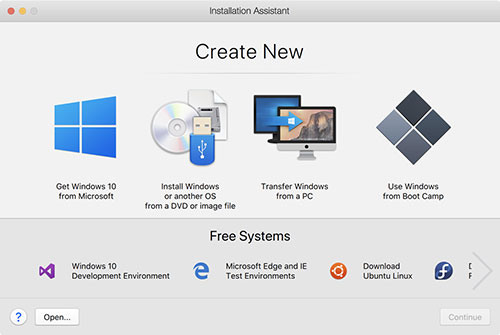- New for Parallels Desktop 17 is native performance on both Intel and M1 machines, meaning users benefit from a host of speed improvements while running Windows 10 and Windows 11 Preview.
- #WindowsOnMac #SetupWindows11OnBigSur #ParallelsDesktop #Windows11 #BigSur #ParallelsDesktop16This video will help you understand how to start using Parallel.
- Full compatibility in future Parallels Desktop updates is expected. We don't know when Microsoft intends to release Windows 11, but when it does, there's a very good chance Mac owners will be able.
Parallels Desktop 17 was released today, bringing native support for Windows 11 and macOS Monterey to both Intel and Apple silicon Macs, as well as a range of performance and compatibility.
The launch of the Apple M1 Macs and the announcement of Windows 11 took a subset of Mac users for quite a ride. These are the users that, for one reason or another, need access to Windows applications or the full Windows operating system itself. There have been some concerns about whether the M1 Mac experience would allow for the same workflow, but Parallels has been quick to dispel those uncertainties. With Apple M1 support in its bag, it’s ready to face the future with Parallels Desktop 17, optimized not just for macOS Monterey but also for Windows 11.
Supporting the new ARM-based M1 chipset was already quite an achievement, proving the might of Apple’s first Silicon. The latest versions of Windows 10 and the upcoming Windows 11 release, however, also raise the bar a bit higher for environments running Microsoft’s platform. With Parallels Desktop 17, the virtualization expert is trying to prove it can face those challenges with aplomb.
There is, of course, a lot of improvements across the board, with the more significant ones happening for M1 Macs. One key new feature is a new display driver that not only improves UI responsiveness it also boosts framerates in Windows games. Those running Parallels Desktop 17 on M1 Macs can now also use Windows’s battery-saving features as if the OS was running on native hardware.
One of the key requirements of Windows 11 is the Trusted Platform Module, and the latest Parallels Desktop release brings a new virtual TPM chip to meet those requirements. You can also configure USB fingerprint scanners for Windows applications that require even more security and privacy.
There are also improvements in the drag and drop experience between Windows and macOS apps, as well as better control over resources allocated for virtual machines. As before, Parallels Desktop 17 for Mac is available under various subscription options and is ready to meet users’ needs when Apple and Microsoft finally release their new operating systems this year.
Story Timeline
Users will soon be able to run Windows 11 officially on their Macs, thanks to Parallel Desktop 17. The new version supports both Intel and M1 Macs. However, if you are using an M1 Mac, you will only be able to emulate other Arm-based operating systems, for instance, Windows on Arm.
Despite the caveats that M1 users have to deal with while installing Windows on Arm, there are significant performance improvements when compared to Parallels 16 running on Intel versions. According to Parallels, the M1 Macs will get up to 28 percent better DirectX 11 performance and up to 20 percent better disk performance. The company adds that Windows will start up to 33 percent faster on M1 and Windows 10 will be able to resume 38 percent faster as well.
In addition to this, you will get up to 25 percent faster 2D graphics and up to six times faster OpenGL performance in Windows virtual machines on all supported Macs, including the Intel ones. M1 users can also use BitLocker and Secure Boot, since it includes a virtualized TPM.

Along with Windows 11, Parallels also supports the latest macOS Monterey, giving you the best of both worlds.
Parallels has not modified the pricing this year. The regular version of Parallels Desktop 17 is still available for $79.99 a year, and a perpetual license will cost you $99.99. The Pro and Business editions will also cost you $99.99 a year.
Parallels 11 Mojave

Parallels 11
If you have a perpetual license for a previous version of Parallels, you can get the latest version for $49.99.
Parallels 11 Download
You can check out Parallels Desktop 17 on their official website.
Comments are closed.